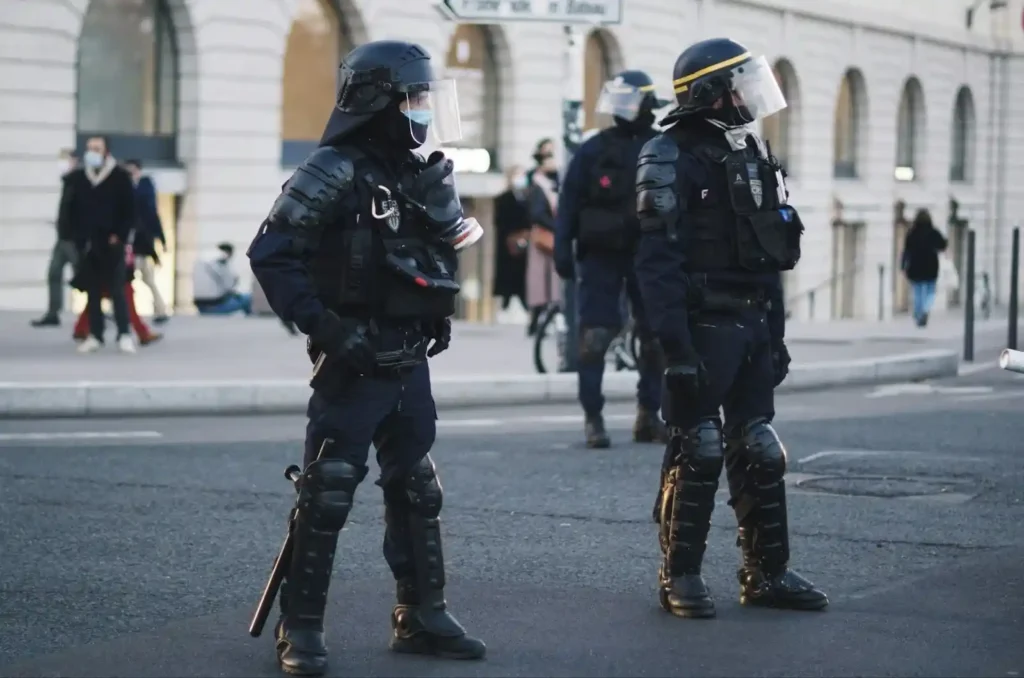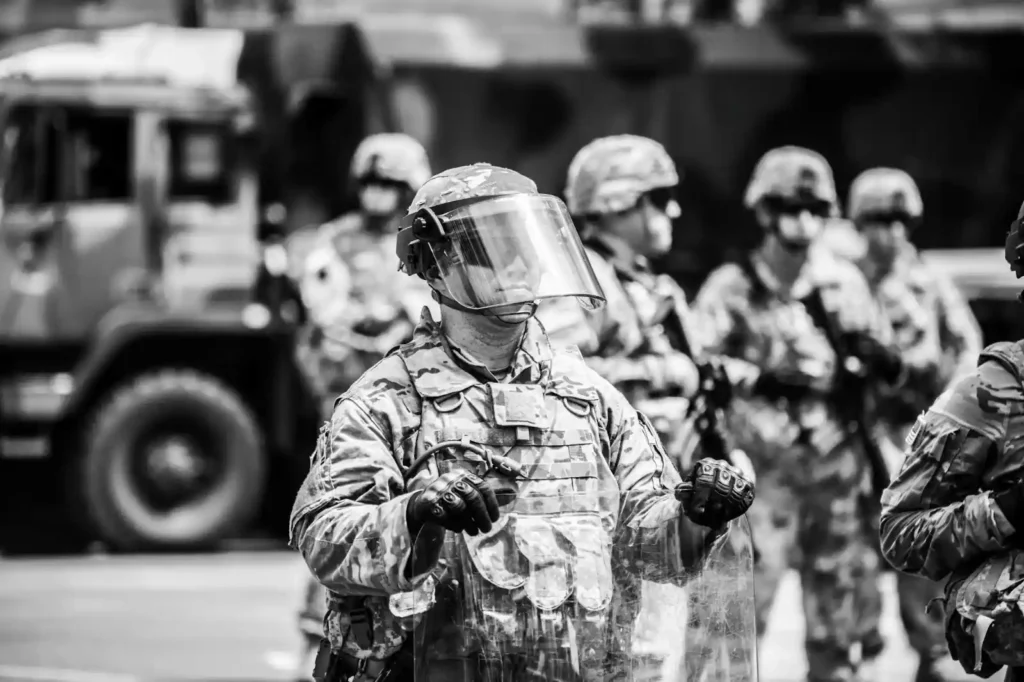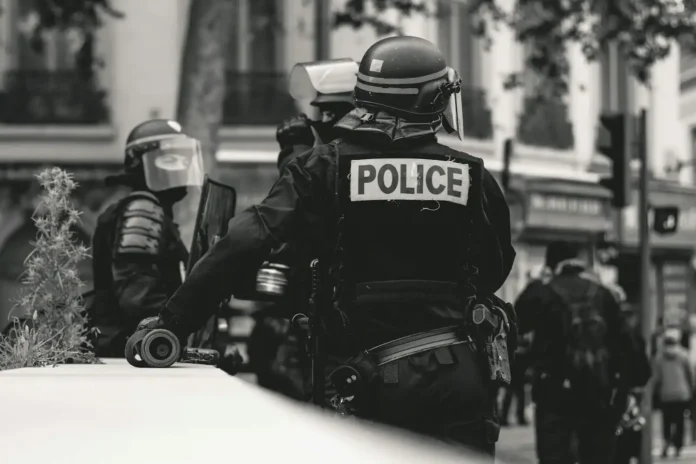Selecting the right full body armor is crucial for personal safety, whether you are in law enforcement, the military, or a security professional.
The different types of full body armor available cater to various needs, so understanding which one is right for you can make a significant difference.
This article aims to guide you through the process of choosing the best full body armor suit for your needs. We’ll cover the basics, explain the different types, and provide vital information to help you make an informed choice.
Understanding Full Body Armor

Full body armor is designed to protect the body from various threats, including bullets, shrapnel, and blunt force trauma. It is often used by military personnel, law enforcement officers, and security professionals who operate in high-risk environments.
Differentiating Full Body Armor from Other Types
While full body armor offers extensive coverage, other types of body armor focus on protecting specific areas of the body, such as:
- Vests: Generally protect the torso and may include side panels.
- Plate Carriers: These hold ballistic plates, providing more targeted protection (usually for the chest and back).
Common Misconceptions and Facts
- Misconception: Full body armor is bulletproof.
- Fact: Armor is bullet-resistant to various degrees based on its rating.
- Misconception: Full body armor is always heavy and cumbersome.
- Fact: Modern materials and designs have made body armor lighter and more comfortable.
Types of Full Body Armor

When choosing full body armor, it’s essential to understand the types available:
Soft Armor
- Made from materials like Kevlar.
- Lightweight and flexible.
- Effective against handguns and some types of shrapnel.
Hard Armor
- Made from materials like ceramic and steel plates.
- Heavier but offers higher protection levels.
- Effective against rifles and armor-piercing rounds.
Combination Armor
- Uses both soft and hard materials.
- Balances flexibility and high-level protection.
- Often used in tactical situations where diverse threats are expected.
Each type of armor has its materials and benefits.
By understanding these basics, you’re better prepared to evaluate your specific needs and choose the right full body armor suit for your situation.
Key Features to Look for in a Full Body Armor Suit
When choosing a full body armor suit, it’s crucial to evaluate several key features to ensure optimal protection, comfort, and usability.
- Protection Level
- The National Institute of Justice (NIJ) categorizes body armor into different protection levels. Each level is suited to specific threat types.
- Level II: Stops 9mm and .357 Magnum rounds. Good for general protection.
- Level IIIA: Stops most handgun threats, including .44 Magnum and 9mm submachine gun rounds.
- Level III: Designed to stop rifle rounds, such as 7.62mm FMJ.
- Level IV: Provides the highest level of protection, capable of stopping armor-piercing rifle rounds.
- The National Institute of Justice (NIJ) categorizes body armor into different protection levels. Each level is suited to specific threat types.
- Comfort and Fit
- Ensuring a proper fit is vital for effectiveness and comfort.
- Take accurate measurements of your chest, waist, and torso length.
- Key comfort features include:
- Adjustable straps
- Ventilation panels
- Padded areas
- Flexible materials
- Weight and Mobility
- Balance between protection level and weight is important for mobility.
- Opt for lightweight armor for scenarios that require high mobility, such as patrolling or tactical operations.
- Example: Lightweight soft armor is suitable for extended wear, whereas hard armor offers more protection but less mobility.
Selecting the right combination of these features will help ensure that your full body armor suit provides the best possible protection without compromising on comfort or practicality.
Comparing Full Body Armor Suit Brands
Choosing the right full body armor suit involves evaluating different brands to find one that meets your needs. Here, we’ll compare three leading brands in the market, covering their popular models and key features.
Brand 1: Body Armor Outlet
- Overview: Body Armor Outlet is a well-known brand in the personal protective equipment market, offering a range of body armor solutions for various needs.
- Popular Models:
- Blauer Armorskin TacVest XP: An essential protective garment for major operations.
- BAO Tactical Uniform Carrier: Provides maximum protection against high-velocity rounds.
- Key Features:
- High-performance ballistic materials for superior protection.
- Adjustable straps and ergonomic designs for comfort.
- Additional options for neck, shoulder, and groin protection.
Brand 2: AR500 Armor
- Overview: AR500 Armor specializes in affordable and durable full body bulletproof armor, popular among law enforcement and private security professionals.
- Popular Models:
- AR500 Level III: Known for its lightweight, yet robust defense.
- AR500 Level IV: Offers comprehensive protection against rifle fire.
- Key Features:
- Utilizes advanced steel and ceramic composite materials.
- Offering modular systems with various customizable attachments.
- Built to withstand harsh environmental conditions.
- Customer Reviews: As highlighted by Reddit, AR500 Armor is praised for its durability and cost-effectiveness.
Brand 3: Point Blank Enterprises
- Overview: Point Blank Enterprises is another leader in the body armor industry, serving military, law enforcement, and civilians.
- Popular Models:
- Point Blank Alpha Elite Series: Lightweight and provides advanced threat protection.
- Point Blank Vision Series: Balances protection with comfort and mobility.
- Key Features:
- Advanced ballistic panels for enhanced protection.
- Integrated technology for improved heat dissipation and comfort.
- Custom-sized solutions to ensure a proper fit.
- Customer Reviews: Featured in a Point Blank video, users highlight the excellent fit and high level of protection these suits provide.
Considerations such as pricing, availability, and customer reviews can further help you make an informed decision when choosing a full body armor suit.
Consider Your Environment and Threat Level
When selecting a full body armor suit, it’s essential to consider your specific environment and threat level. Different scenarios require different types of protection.
Scenarios and Appropriate Armor
- Urban Law Enforcement
- Recommended Armor: Soft armor or combination armors, such as Level II or IIIA.
- Why: Offers protection against common handgun threats while allowing for high mobility.
- Military Deployment
- Recommended Armor: Hard armor, such as Level III or IV.
- Why: Provides robust defense against rifle rounds and higher-velocity threats.
- Private Security
- Recommended Armor: Combination armors, typically Level IIIA with additional plates.
- Why: Balances the need for protection and mobility in varying threat environments.
- Civilian Preparedness
- Recommended Armor: Soft or hard armor, depending on perceived threats.
- Why: Offers flexibility in protection while maintaining comfort for everyday use.
Situational Factors
- Climate:
- In hot climates, look for armor with good ventilation and moisture-wicking materials.
- In cold climates, consider armor with adjustable layers that can be adapted for different conditions.
- Potential Threats:
- Assess whether the primary threats are handguns, rifles, or other weapons to determine the suitable protection level.
By carefully considering your environment and threat level, you can make a more informed choice in selecting the full body armor suit that best meets your needs.
Maintenance and Care of Full Body Bulletproof Armor
Proper maintenance and care for your full body armor are crucial to ensure it remains effective and lasts a long time. Here’s a guide to help you take care of your body armor effectively:
Daily Care and Maintenance
- Inspect Regularly: Check your armor daily for any signs of damage, wear, or degradation.
- Clean Carefully: Avoid machine washing. Instead, use a damp cloth to wipe down the outer layer. For deeper cleaning, follow the manufacturer’s instructions.
- Drying: Never wring out the armor or use a dryer. Allow it to air dry completely away from direct sunlight.
Storage Tips
- Proper Storage: Store your full body armor flat or on a proper hanger. Avoid folding it, as creases can degrade its protective capabilities over time.
- Dry Environment: Ensure the storage area is dry to prevent mold and mildew. Excess moisture can weaken the materials.
- Temperature Regulation: Keep your armor at a consistent, moderate temperature. Extreme heat or cold can negatively affect the materials.
Signs that Your Armor May Need Replacing
- Visible Damage: Look for cracks, tears, or any visible deformities in the armor.
- Reduced Performance: If you’ve experienced any changes in the armor’s weight, shape, or flexibility, it might be time for a replacement.
- Expire Date: Body armor typically comes with an expiration date. Always check the manufacturer’s guidelines for longevity and adhere to replacement timelines.
Legal and Ethical Considerations
When deciding to purchase and wear full body bulletproof armor, it’s essential to be aware of legal and ethical considerations:
Legal Restrictions
- Regional Laws: Different regions have specific laws regarding the possession and use of bulletproof armor. For instance, some places require permits or have outright bans on civilian ownership.
- Check Local Regulations: Always consult local, state, or national laws before purchasing and wearing body armor.
Ethical Use
- Purpose-Driven Use: Full body armor should be used primarily for protection in high-risk situations. Misuse or wearing it in inappropriate contexts can lead to legal issues or public concern.
- Professional Settings: It’s important to use body armor in professional settings, like law enforcement, private security, or military deployment, where such protection is necessary.
By understanding and adhering to these legal and ethical guidelines, you ensure not only your safety but also respect for the rules and ethics surrounding the use of full body bulletproof armor.



































